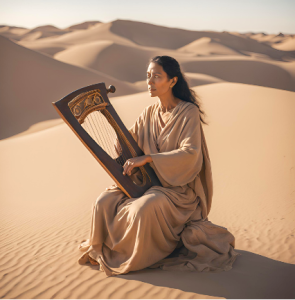It’s the year 2025. Over the years, I have tried different ways of taking stock of life, from typical New Year’s resolutions to reviews of the past year’s meaningful moments and from scrolling through photos of New Year’s Eve over the years to looking closely at the faces around my table. This year has me focused on what it means to create memories.
Memories are strongest when they are shared. Something funny happens when more people are involved in sharing a memory. On the one hand, as I have seen again and again in a house of mourning, the more people who come together to remember something or someone, the more vivid that memory becomes; the memory becomes strengthened in the telling and retelling and listening. On the other hand, the more people share a story the more the story shifts, sometimes changing in significant ways. This latter aspect of sharing memory happens more often when the narrative scope becomes grander; our biggest stories tend to contain the most changes.

The ancient rabbis had a surprising fix for this issue. They name a little-known figure as the keeper of memory and the driver of stories: Serach bat Asher. She shows up right in the transition from Genesis to Exodus, a transition the Jewish liturgical Torah reading cycle made this weekend. She is the granddaughter of the patriarch Jacob, credited with doing the dirty work of telling her grandfathers what her father and uncles are afraid to say: Joseph, Jacob’s favorite son, is alive and in charge of Egypt. Once she delivers the news, the family moves to Egypt. But wait, there’s more.
When Moses comes to deliver the Israelites from slavery, no one knows whether to take him seriously or not. Once again, Serach bat Asher appears. She knows an ancient prophecy that not only would the Israelites be enslaved but also that God would “surely remember” them. As Miriam Anzovin puts it in one of. her trendy videos: “Because of her authority and the passwords she had learned as a girl, the Israelites believed that Moses and Aaron were there to deliver them from Egypt. And after those long years of agonized waiting, of watching, of being a living, breathing password manager, Serach bat Asher was going with them.”
That’s right, 400 years later the keeper of memories moves the story forward. Those ancient rabbis say that her role in telling her grandfather about Joseph led to him blessing her with immortality.
Serach bat Asher appears more than a thousand years later to correct one of these rabbis’ retelling of the Exodus. In Pesikta DeRav Kahana 11:13, she shows up to tell Rabbi Yochanan that the Red Sea’s walls were not lattices but rather windows. In this story, the rabbis themselves needing a fact-checker and more. Serach’s role is often to fill in narrative gaps; she gives more than details; she gives the missing piece. As Anzovin puts it, “She is the personification of memory and storytelling.”
Looking back at 2024 and thinking ahead about 2025, I wonder what it might mean to tell our stories with an eye on memory. Who might we rely on and for what? How can we play a deeper role in our stories (and in the grander narratives surrounding us)? I have a deep sense that I could use a Serach bat Asher to be in the story with me. As we make the shift to another year, I am resolving to be more than a storyteller and instead to be, as Zohar Raviv taught me to think of it, a story-bearer. Serach bat Asher inspires me to make and to be memory and story together. May we find ourselves blessed with great memories and stories in 2025.
About Rabbi Jeremy Winaker
Rabbi Jeremy Winaker is the executive director of the Greater Philadelphia Hillel Network, responsible for West Chester University, Haverford, Bryn Mawr, and other area colleges. He is the former head of school at the Albert Einstein Academy in Wilmington and was the senior Jewish educator at the Kristol Hillel Center at the University of Delaware for four years. Rabbi Winaker lives in Delaware with his wife and three children.

Comments